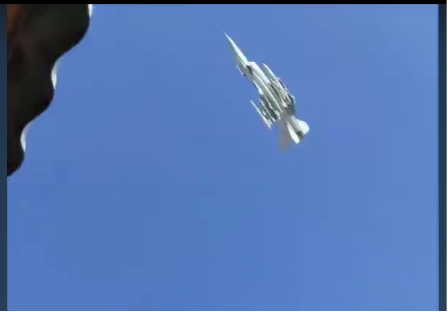Russian missile attacks against civilian infrastructure targets in Ukraine are using Soviet-era strategic aviation that it received from Kyiv in 1999 to pay for natural gas Moscow had supplied to its neighbor.
An investigation by journalists from Radio Liberty’s “Schemes” team (Radio Liberty) has identified ten former Ukrainian aircraft that Russia has employed in the attacks. These include six Tupolev Tu-160 (NATO: Blackjack)supersonic, nuclear-capable strategic bombers, still operational from an original total of eight that were handed over and four Tu-95MS (NATO: Bear) turboprop-powered strategic bombers.
JOIN US ON TELEGRAM
Follow our coverage of the war on the @Kyivpost_official.
After consulting with the international air registry, the journalists were able to identify the original Ukrainian air force tail numbers of seven of the Tu-160s, some of which are still visible on the aircraft, that Moscow has renamed after famous Russians:
- Tail number “10” – “Mykola Kuznetsov”
- Tail number “11” - “Vasyl Senko”
- Tail number “12” - “Alexander Novikov”
- Tail number “15” - “Vladimir Sudets”
- Tail number “16” - “Alexey Plokhov”
- Tail number “18” - “Andriy Tupolev”
- Tail number “22” - “Igor Sikorsky”
They also discovered the new names of three of the Tu-95MS which Russia is using, that seem to be named after cities in Russia: “Krasnoyarsk,” “Sevastopol,” and “Izborsk.”
Under the 1999 agreement, Ukraine sent eight Tu-160 and three Tu-95MS heavy bombers and 575 Kh-55 cruise missiles to Russia in return for clearing Kyiv’s $275 million debt for Russian gas.
The deal was investigated by a Temporary Investigative Commission (TIC) set up by the Verkhovna Rada to look into corruption and fraud within the Armed Forces of Ukraine in the period from 2004 to 2017. The TIC estimated that the value of the aircraft and missiles that were given away without any parliamentary oversight or approval were worth more than $2 billion.

Germans go to Vote Under Shadow of Far-Right Surge, Trump
Asked for his comments, former President of Ukraine Leonid Kuchma said that even if Ukraine had retained the strategic bombers, they would have been little help in the country’s defense against Russia.
In a written reply Kuchma said, “Russia has air defense systems capable of countering Kh-55 type missiles, while huge and relatively low-speed bombers would have become easy prey for Russian weapons in the first days of the war, both in the air and at airfields.”
“Strategic weapons could hardly help solve Ukraine's strategic tasks, and they definitely did not fit with Ukrainian capabilities. We had no missile test sites. We didn't even have enough territory to operate these weapons, because strategic weapons require strategic space.”
On the night of Oct. 3, drones of the SBU, Special Operations Forces and other defense forces flew into the Borisoglebsk airfield in the Voronezh region of Russia. Warehouses with cockpits, parking lots for Su-35 and Su-34 aircraft, and aviation fuel storage facilities were located at the airfield.
On the night of Oct. 13, a Tu-134 military transport plane was burned at the Orenburg-2 airfield in Russia. Earlier, an An-3 airplane of Borus Airlines crashed in the Republic of Sakha (Yakutia) of Russia.
On Oct. 20, Ukrainian Defense Forces attacked the infrastructure of the Lipetsk-2 military airfield in the Lipetsk region of the Russian Federation and the Sverdlov plant in Dzerzhinsk, Nizhny Novgorod Oblast during which explosions and air defense activity was observed.
You can also highlight the text and press Ctrl + Enter











